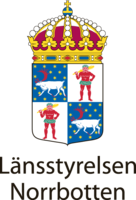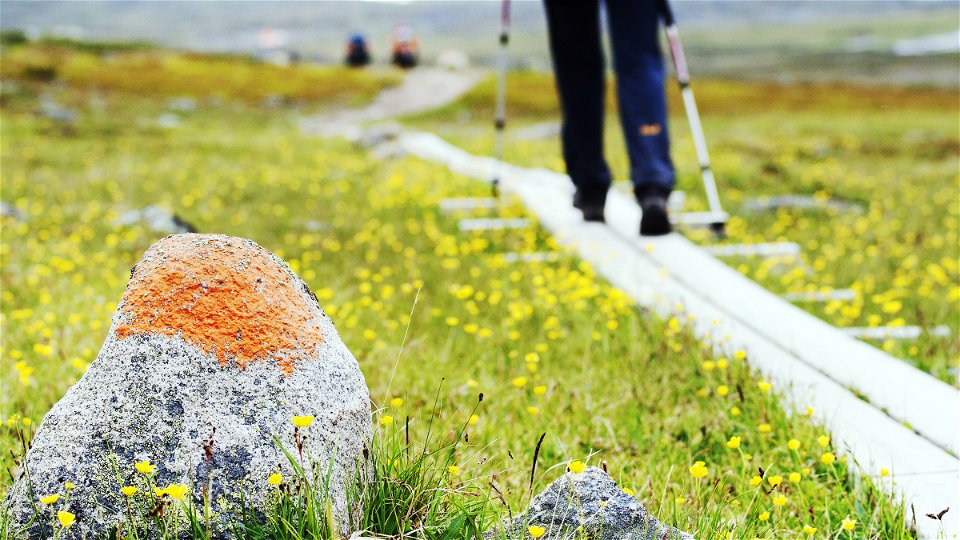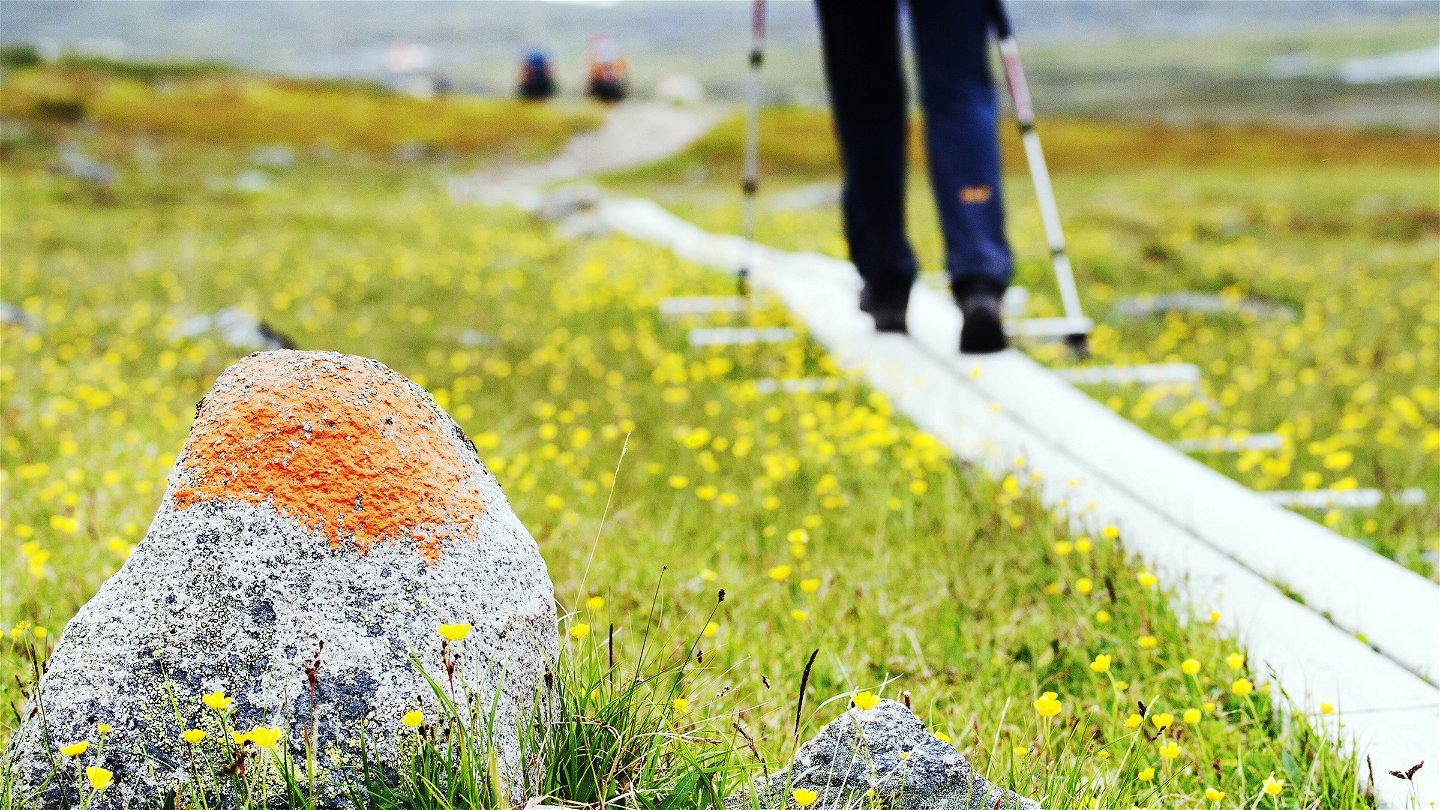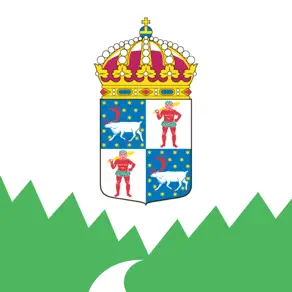Mountain safety
Images
The mountains offer fantastic experiences. But the weather, the terrain and injuries can also lead to risk filled situations. Here we have collected important information about safety in the mountains.
Leave your itinerary It is important to inform someone about your mountain tour . Tell a friend, relative or someone else about your plan itinerary and estimated time of return. Then someone can sound the alarm tool if you do not return according to plan.
In mountain cabins and shelters along the marked trails there are often guest books, where we recommend that you write something. These messages are not followed up until someone is reported missing. But whenever mountain rescue looks for people, details in the guest books give valuable guidance.
Marked trails On bare mountains the trails are generally marked with small stone cairns, sometimes with red paint at the top. In mountain birch forest, the trails are often marked with painted rings or spots on the trees. The trails often appear as well trampled paths. In places, summer and winter trails run parallel, and there the markings consist of winter trail markings – posts with a red X. Make sure you do not follow a winter trail in summer. That can lead you into boggy areas or out towards a lake. All bridges, stopover cabins, emergency telephones, latrines and rowing routes along the state trails are marked on Lantmäteriet mountain maps.
Emergency telephones in the mountains There are emergency telephones in most mountain cabins and in some of the stopover cabins along the trails. On the mountain map you can see which places have an emergency telephone. Via the telephone you get direct contact with the police liaison office and mountain rescue. Use the telephone to sound the alarm if something has happened, or to ask for advice. It is also a good idea to notify that you are delayed on your tour so that relatives do not become anxious. That may mean that the mountain rescue service does not need to be called out unnecessarily.
Mobile phones in the mountains A mobile phone is good to have on the tour, but can also give a false sense of security. It is not at all certain that you can use it in the mountains! This is because the telephone network is not built out in the mountains, and because of the hilly terrain. The mobile sometimes works near roads and communities, but absolutely not everywhere. Therefore, do not promise your friends and relatives constant monitoring and daily calls. Remember also that the mobile batteries drain quickly when it is cold. Bring along an extra battery or a power bank. Turn off the mobile and keep it warm inside your clothes when not using it.
Mountain rescue The police are responsible for search and rescue in the mountains. To help them, they have the mountain rescue service, which relies on the efforts of volunteer members who are trained and equipped by the police. Mountain rescue can be reached directly via the emergency telephones that are located in many places in the mountains or ordinary telephones via the emergency number 112. Note that most mountain areas have no mobile coverage.
Read more about mountain safety on the Mountain Safety Council website.
Contact
Email address
Länsstyrelsen Norrbotten
Organization logotype




